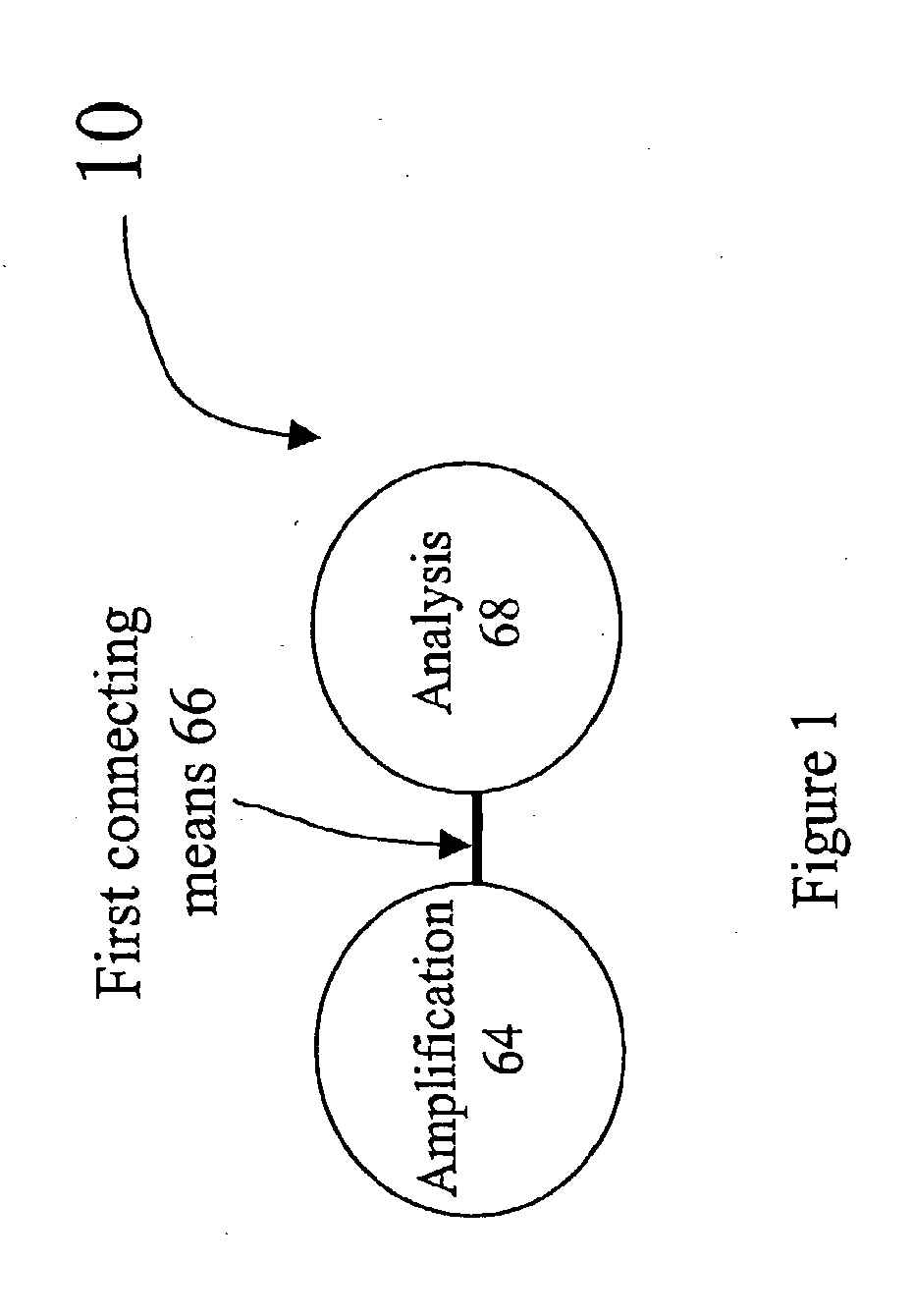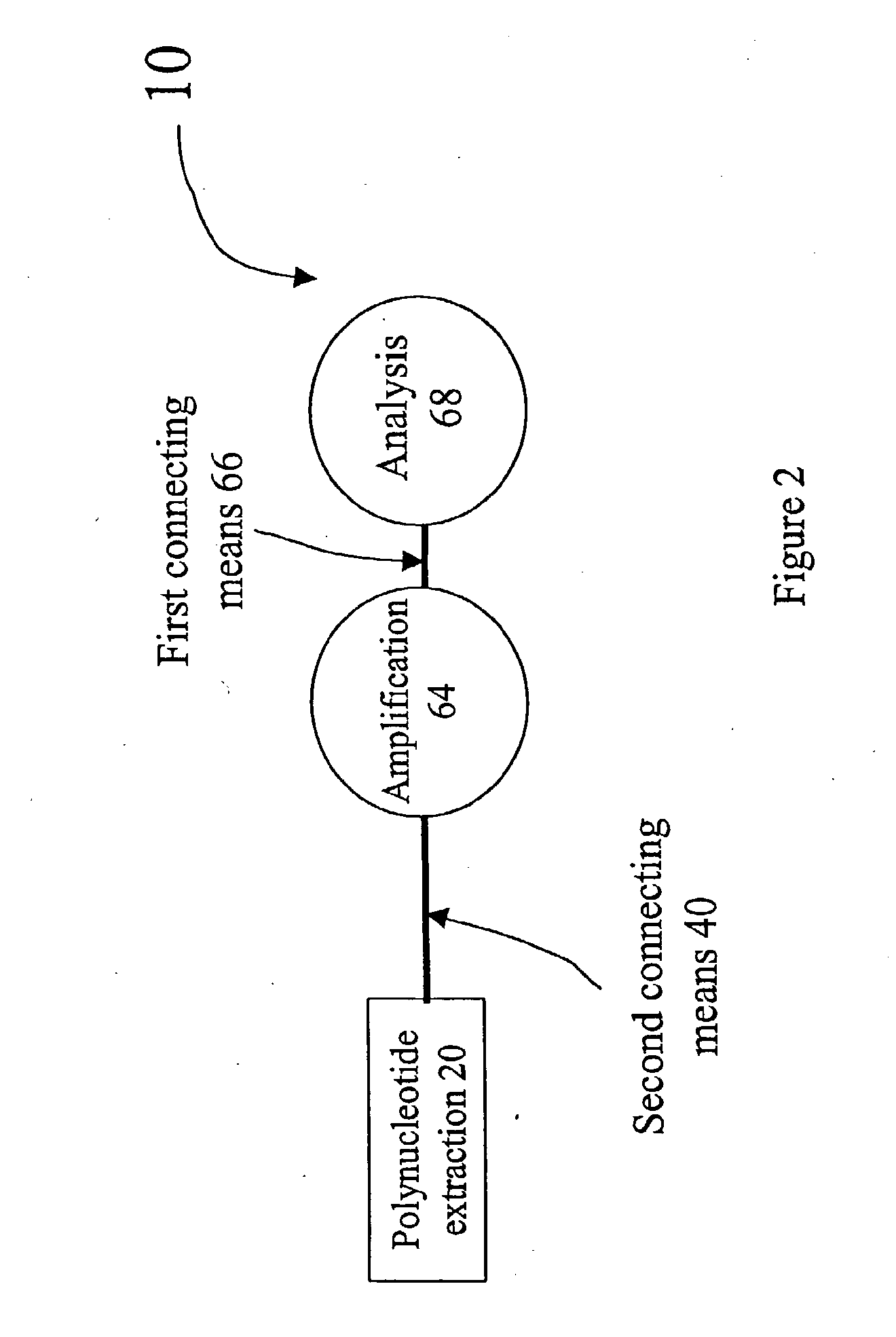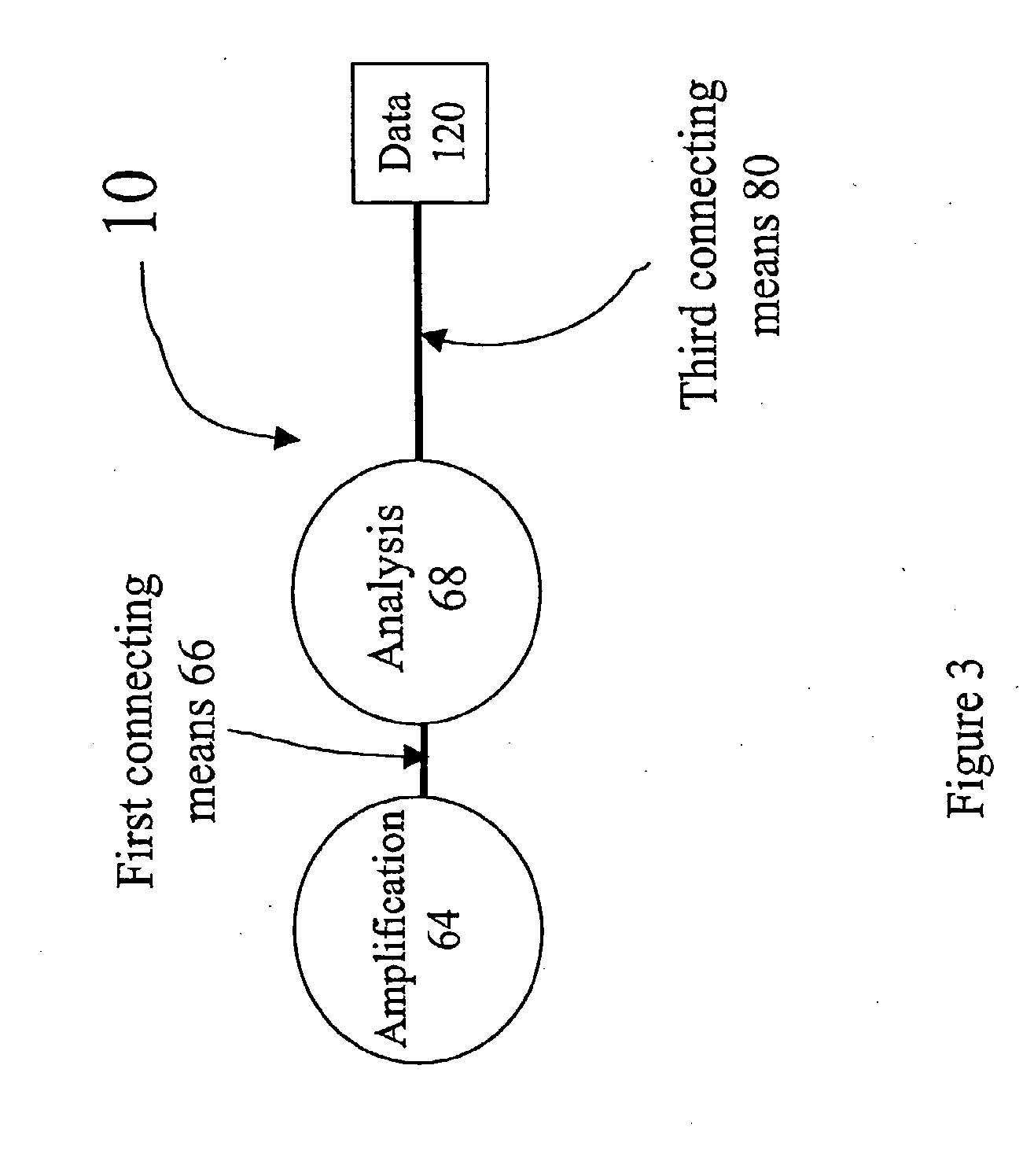Apparatus for polynucleotide detection and quantitation
a polynucleotide and apparatus technology, applied in the field of automatic apparatuses, can solve the problems of large losses associated with this project, inconvenient operation, and inability to accurately detect and quantify polynucleotides,
- Summary
- Abstract
- Description
- Claims
- Application Information
AI Technical Summary
Problems solved by technology
Method used
Image
Examples
Embodiment Construction
[0077]The following terms and definitions are used herein:
[0078]“Sample” as used herein refers to a biological material which is isolated from its natural environment and contains a polynucleotide. A “sample” according to the invention may consist of purified or isolated polynucleotide, or it may comprise a biological sample such as a tissue sample, a biological fluid sample, or a cell sample comprising a polynucleotide. A biological fluid includes, but is not limited to, blood, plasma, sputum, urine, cerebrospinal fluid, lavages, and leukophoresis samples. A sample of the present invention may be any plant, animal, bacterial or viral material containing a polynucleotide, or any material derived therefrom.
[0079]“Prepared sample” as used herein refers to a preparation derived from a sample for the purpose of isolating or synthesizing a polynucleotide, i.e., a DNA (e.g., genomic DNA or cDNA) or a RNA (e.g., total RNA or mRNA).
[0080]“Aliquot” as used herein refers to a sample volume ta...
PUM
| Property | Measurement | Unit |
|---|---|---|
| volume | aaaaa | aaaaa |
| volume | aaaaa | aaaaa |
| volume | aaaaa | aaaaa |
Abstract
Description
Claims
Application Information
 Login to View More
Login to View More - R&D
- Intellectual Property
- Life Sciences
- Materials
- Tech Scout
- Unparalleled Data Quality
- Higher Quality Content
- 60% Fewer Hallucinations
Browse by: Latest US Patents, China's latest patents, Technical Efficacy Thesaurus, Application Domain, Technology Topic, Popular Technical Reports.
© 2025 PatSnap. All rights reserved.Legal|Privacy policy|Modern Slavery Act Transparency Statement|Sitemap|About US| Contact US: help@patsnap.com



